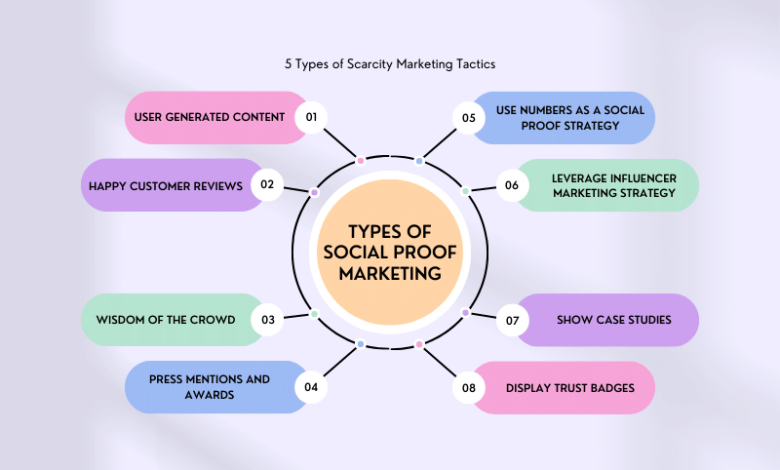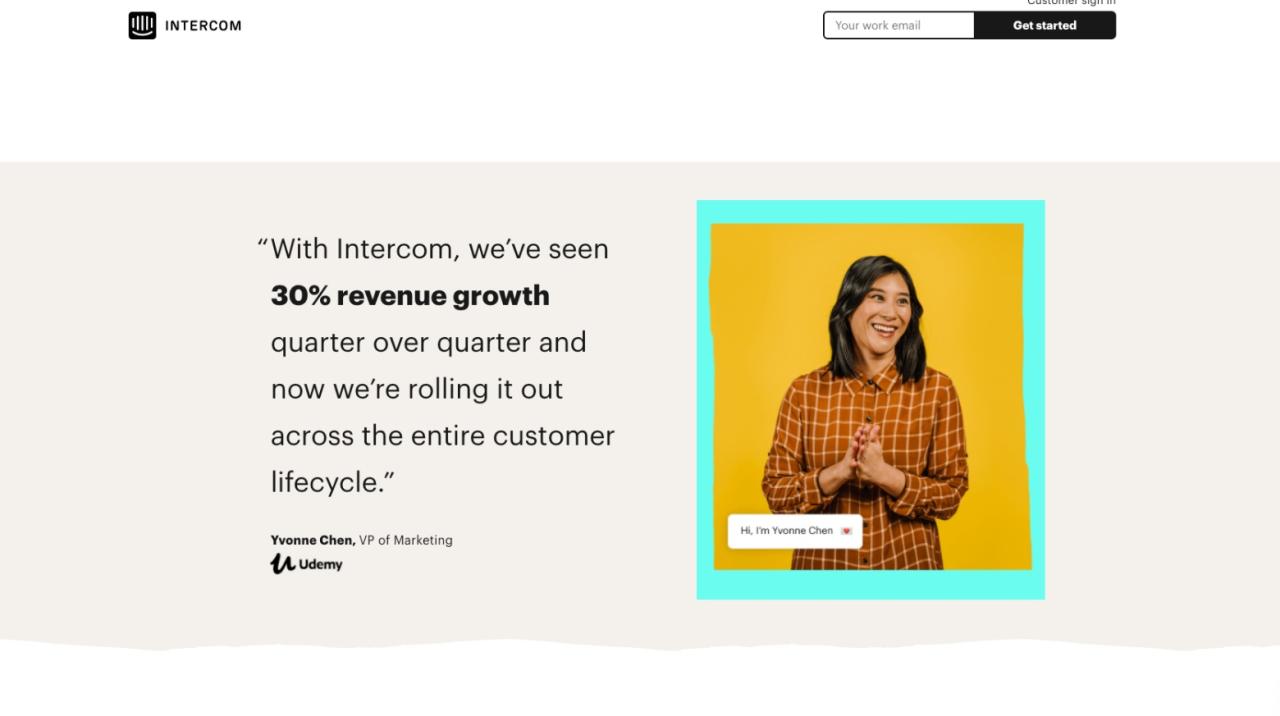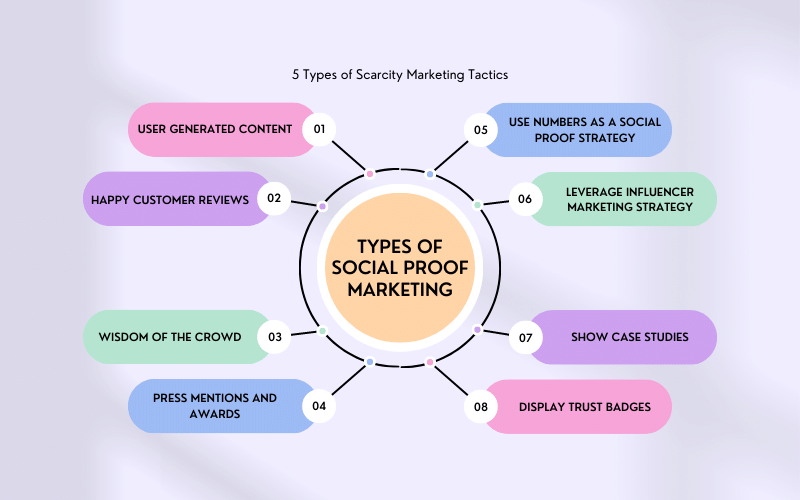
Social Proof Mastering Digital Marketing Psychology
Social proof how to use psychology in digital marketing – Social proof, how to use psychology in digital marketing, is a powerful tool for boosting trust and conversions online. This guide delves into the psychology behind social proof, exploring how testimonials, reviews, and social media engagement influence purchasing decisions. We’ll uncover the secrets of implementing effective social proof strategies across various digital channels, from websites to social media and email marketing.
Understanding the strengths and weaknesses of different social proof tactics will help you maximize their impact and avoid potential pitfalls.
From understanding the concept of social proof and its relevance in today’s digital landscape to implementing strategies across different channels, we’ll cover it all. We’ll also analyze how to measure the impact of these strategies and consider ethical considerations when using social proof in marketing. Real-world case studies and best practices will round out the discussion, ensuring you have the knowledge and insights to effectively leverage social proof in your own digital marketing campaigns.
Understanding Social Proof in Digital Marketing

Social proof is a powerful psychological principle that heavily influences consumer behavior online. It leverages the tendency of individuals to look to others for guidance, particularly when faced with uncertainty or complex purchasing decisions. In the digital age, this principle manifests itself in various ways, shaping the way consumers interact with brands and make purchasing choices. Understanding how social proof works in the digital marketing landscape is crucial for businesses looking to increase conversions and build trust with their audience.Social proof operates on the assumption that if many other people find something valuable, it’s likely to be valuable for you too.
This principle is particularly potent in the digital realm where consumers often rely on online reviews, testimonials, and social media engagement to evaluate products and services before making a purchase.
Different Types of Social Proof
Various forms of social proof play a significant role in shaping consumer decisions. Understanding these different types and their respective impacts is essential for marketers to strategically deploy them in their campaigns.
- Testimonials:
- Customer testimonials are powerful because they come from individuals who have personally experienced the product or service. These firsthand accounts resonate with potential buyers, fostering trust and credibility. Testimonials often highlight specific benefits and solutions, making them compelling and relatable. A well-crafted testimonial can provide social validation, encouraging other potential customers to take the same action.
- Reviews:
- Online reviews are another vital form of social proof. Sites like Yelp, Amazon, and Google offer platforms for consumers to share their experiences. The sheer volume of reviews can significantly influence purchasing decisions, especially for products or services with many options. Positive reviews can build trust and demonstrate the widespread satisfaction with a product or service. Conversely, negative reviews can highlight potential drawbacks, although careful management of negative feedback is essential.
- Social Media Engagement:
- Social media engagement metrics, such as likes, shares, comments, and followers, serve as a powerful indicator of popularity and approval. High levels of engagement on social media platforms can generate a perception of widespread appeal and desirability, motivating potential customers to engage with the brand or product. This social validation is particularly important for products and services that are visually-driven or experience-oriented.
- Authority Figures:
- Using endorsements from respected figures in a particular field can lend credibility and authority to a product or service. This can include celebrity endorsements, expert opinions, or endorsements from recognized organizations. This strategy is especially effective when the authority figure aligns with the target audience’s values and interests.
Influence on Purchasing Decisions, Social proof how to use psychology in digital marketing
Social proof significantly influences online purchasing decisions. When consumers encounter numerous positive reviews or testimonials, they perceive the product or service as more trustworthy and desirable. The collective opinion of others often outweighs individual judgments, leading to a higher likelihood of purchase. This effect is particularly noticeable in situations where consumers lack personal experience or expertise regarding a particular product or service.
Understanding social proof is key in digital marketing, essentially leveraging the power of what others are doing to boost your own credibility. This translates directly to influencer marketing, where partnering with the right influencers can significantly amplify your message. Check out this comprehensive guide on influencer marketing guide how to work with influencers for expert tips on how to effectively collaborate with influencers, ultimately using their reach to build trust and social proof for your brand.
It’s all about using psychology to your advantage in a crowded online marketplace.
Comparison of Social Proof Strategies
Different social proof strategies vary in their effectiveness depending on the context and target audience. Testimonials, for instance, can be very effective for building trust and highlighting specific benefits. However, their impact might be limited if the testimonials are perceived as inauthentic or biased. Reviews, on the other hand, often carry more weight because they come from a wider range of sources.
Social media engagement can generate excitement and visibility but might not always translate directly into sales.
Effectiveness of Social Proof Tactics
| Social Proof Type | Strengths | Weaknesses | Examples |
|---|---|---|---|
| Testimonials | Builds trust, highlights specific benefits, relatable | Potentially inauthentic, biased, limited reach | “I love this product! It solved my problem.” |
| Reviews | Wide range of opinions, credible source, quantifiable | Negative reviews can hurt reputation, potentially fake reviews | “5-star rating on Amazon” |
| Social Media Engagement | High visibility, perceived popularity, virality potential | Doesn’t always translate to sales, can be manipulated | High number of likes on Instagram posts |
| Authority Figures | Lends credibility, authority, instant trust | Costly, requires careful selection, potential for misalignment | Endorsements by a recognized expert in the field |
Implementing Social Proof Strategies
Social proof, the psychological phenomenon where people conform to the actions of others, is a powerful tool in digital marketing. Understanding its principles is crucial for building trust and driving conversions. This section dives into practical strategies for integrating social proof into your campaigns, demonstrating how to leverage it across various digital platforms.Effective social proof goes beyond simply displaying numbers; it’s about demonstrating genuine validation and trust from a credible source.
Understanding social proof is key in digital marketing, leveraging psychology to boost conversions. Think about how a product’s popularity influences buying decisions. To make your brand stand out, using LinkedIn Showcase pages is crucial, and understanding how to set them up correctly is important. Check out these helpful insights for optimizing your LinkedIn Showcase page setup linked in showcase page insights important tips for setup to showcase your expertise and build credibility.
This ultimately builds social proof and helps you connect with the right audience, ultimately driving sales through a deeper understanding of your target demographic.
This section details how to strategically implement these methods, ensuring that they resonate authentically with your target audience.
Framework for Integrating Social Proof
Integrating social proof into a digital marketing campaign requires a well-defined framework. This structured approach ensures that social proof elements are strategically placed to maximize impact and reinforce your brand message. The framework should be tailored to the specific goals of the campaign and the target audience. A well-thought-out plan will help you determine where to place elements of social proof to maximize their effect.
Methods for Gathering and Displaying Social Proof Elements
Several methods can be used to gather and display social proof elements effectively. These methods must be chosen based on the context and the target audience. For example, testimonials from satisfied customers are highly effective for building trust, while high ratings on review sites can convey credibility.
- Customer Testimonials: Collecting genuine customer testimonials is a powerful way to build social proof. These testimonials should be diverse, highlighting different aspects of your product or service, and ideally come from people who represent your target audience. For example, a clothing company could include a testimonial from a young professional who appreciates the company’s ethical practices.
- Reviews and Ratings: Displaying positive reviews and ratings from reputable review sites, like Trustpilot or Yelp, can significantly influence purchasing decisions. It’s important to display these reviews prominently on your website and product pages. For instance, a restaurant can feature a section on its website displaying positive customer reviews from Google Maps or TripAdvisor.
- Case Studies: Detailed case studies showcasing how your product or service has helped other businesses or individuals achieve their goals can demonstrate its effectiveness and credibility. For example, a software company can showcase case studies highlighting how their software increased productivity for various clients.
- Social Media Engagement: Monitoring and highlighting positive social media engagement, such as likes, shares, and comments, can build social proof and demonstrate community interest. A beauty brand could use a section on its website showcasing recent Instagram posts featuring their products.
- User-Generated Content (UGC): Encouraging user-generated content (UGC) by hosting contests, running giveaways, or implementing social media campaigns can significantly enhance social proof. This includes customer photos and videos showcasing your product in use. For instance, a food delivery service can highlight photos of customers enjoying their meals, shared on Instagram.
Effective Social Proof Implementation in Digital Platforms
Social proof can be effectively implemented across various digital platforms. Tailoring the implementation to the specific platform and its functionalities is key. Consider using visually appealing and easily digestible formats.
- Websites: Display customer testimonials on product pages, incorporate star ratings for products, and showcase positive reviews prominently. For example, an e-commerce site could display customer reviews under each product description, making it easy for customers to find and read them.
- Social Media: Feature user-generated content (UGC) in posts and stories. Use interactive polls or Q&As to engage with followers. For example, a clothing brand could post customer photos wearing their latest designs, highlighting the diverse styles of their customers.
- Email Marketing: Include customer testimonials in email newsletters or promotional emails to build trust. Use compelling visuals and clear calls to action to increase engagement. For instance, an online course provider can include a testimonial from a student who successfully completed the course and achieved their goals.
Flowchart for Building Social Proof
Building social proof is an iterative process. A flowchart outlining the steps involved can help streamline the process.
- Identify your target audience: Understanding your target audience’s needs and motivations will help you craft social proof strategies that resonate with them. For instance, if your target audience is environmentally conscious, showcasing your company’s commitment to sustainability will be a powerful form of social proof.
- Develop social proof strategies: Based on your target audience, determine which types of social proof will be most effective. Examples include customer testimonials, reviews, and case studies.
- Gather and verify data: Collect data from your customers or partners, ensuring its authenticity. For example, you should verify the authenticity of customer testimonials.
- Choose a platform: Select the platform where your target audience spends the most time and will engage with the social proof.
- Integrate social proof into your campaigns: Strategically place the social proof elements on your website, social media, and other platforms.
- Monitor and measure results: Track the effectiveness of your social proof strategies and make adjustments as needed. This is essential to improve your strategy and increase its effectiveness.
Strategies for Encouraging User-Generated Content
Encouraging user-generated content (UGC) is a vital aspect of building social proof. Here are some strategies to inspire customers to share their experiences.
- Run contests and giveaways: Encourage customers to share photos or videos of your product to participate in a contest or giveaway. This is an excellent way to increase the likelihood of users generating content.
- Offer incentives: Provide exclusive discounts, early access to products, or other rewards for customers who share their experiences. For example, a fashion brand could offer a discount on their next purchase to users who share their outfit using their brand’s hashtag.
- Create interactive campaigns: Use interactive social media campaigns, polls, or Q&As to engage customers and encourage them to share their thoughts and experiences. For example, a food delivery service can host a social media campaign asking users to share their favorite dishes or restaurants.
Leveraging Social Proof for Different Digital Channels
Social proof is a powerful tool in digital marketing, tapping into the human tendency to follow the crowd. By demonstrating that others have had positive experiences with your brand, you build trust and encourage conversions. Understanding how to leverage social proof across various digital channels is key to maximizing its impact. This section delves into specific strategies for websites, social media, email, and paid advertising, providing concrete examples of successful campaigns.Social proof works by subtly influencing consumer behavior.
When users see that others have already chosen or recommended a product or service, it validates their own potential purchase. This perceived validation reduces perceived risk and increases confidence in the decision-making process. By incorporating social proof elements into your digital channels, you can amplify this effect and significantly improve conversion rates.
Social Proof on Websites
Utilizing social proof on websites is crucial for building trust and driving conversions. Displays of customer testimonials, ratings, and reviews are key components. Clearly showcasing positive feedback creates a sense of validation for potential customers, enhancing their confidence in your offerings.
- Customer Reviews and Testimonials: Include prominent sections on your website featuring genuine customer reviews and testimonials. Organize them by category (e.g., product, service) or by customer type (e.g., business, individual). Ensure the reviews are varied and cover a range of experiences.
- Trust Badges and Seals: Display badges and seals from reputable third-party organizations. These symbols of verification instill trust and reassure visitors of your credibility. Ensure the badges are relevant to your target audience.
- Social Proof Icons: Incorporate social proof icons, such as social media share counts, follower counts, or even mentions from industry influencers. Highlighting the popularity of your brand can create a sense of social validation.
Social Proof on Social Media
Social media platforms offer excellent opportunities to leverage social proof. Building a strong social media presence with engagement and positive interactions is vital.
Understanding social proof is key in digital marketing – it’s all about leveraging what others are doing to boost your own brand. To really make your Instagram presence shine, explore tools like the 24 must-have Instagram apps for better posts, which can help you craft visually appealing content. This, in turn, builds trust and credibility, a fundamental aspect of using social proof effectively.
- User-Generated Content (UGC): Encourage customers to share their experiences by asking for reviews, photos, or videos related to your products or services. Feature this UGC prominently on your social media pages.
- Influencer Marketing: Partner with influencers who align with your brand values and target audience. Their endorsements can significantly increase credibility and visibility.
- Interactive Polls and Quizzes: Engage your audience with interactive polls and quizzes related to your products or services. Display the results of these interactions, demonstrating popularity and engagement.
Social Proof in Email Marketing
Email marketing can leverage social proof by highlighting endorsements and testimonials. It can also use testimonials or success stories from past clients to build trust.
- Testimonials in Email Subject Lines: Incorporate snippets of positive testimonials in your email subject lines to pique interest and encourage opens.
- Testimonials Within Email Content: Include short testimonials directly within your email content to reinforce your message and build credibility.
- Social Proof Icons in Email Signatures: Add icons showcasing social media engagement, website traffic, or other metrics in your email signatures to further strengthen your brand image.
Social Proof in Paid Advertising
Social proof is highly effective in paid advertising. It can be implemented through social proof icons and testimonials.
- Testimonials in Ads: Include short testimonials or quotes from satisfied customers in your paid ad copy. Focus on the positive impact of your product or service on the customer’s life.
- Limited-Time Offers with Social Proof: Highlight the popularity of an offer with messaging like “Sold Out in [Time Frame]” or “Top Seller.” This creates a sense of urgency and exclusivity.
- Social Proof Icons in Ad Copy: Include icons or badges showcasing awards, certifications, or positive reviews in your ad copy to build trust and credibility.
Examples of Effective Social Proof Campaigns
Numerous companies have successfully implemented social proof strategies across various digital channels. For example, a popular clothing retailer might showcase customer photos wearing their clothes on their website and social media pages. Another company could feature a prominent review section on their product pages, accompanied by a star rating system. These examples demonstrate how incorporating social proof into the design of a website or social media platform can effectively influence consumer perception and drive sales.
Measuring the Impact of Social Proof: Social Proof How To Use Psychology In Digital Marketing
Social proof, a powerful psychological principle, significantly influences consumer behavior online. Understanding how these strategies affect key metrics is crucial for optimizing digital marketing campaigns. By accurately measuring the impact of social proof, businesses can refine their approaches, maximizing their return on investment and improving conversion rates.
Key Performance Indicators for Social Proof
Tracking the effectiveness of social proof strategies requires a meticulous approach to measuring key performance indicators (KPIs). Different social proof elements will impact various metrics, so a multifaceted approach is essential. This involves identifying metrics that specifically reflect the influence of social proof on desired actions, such as conversions and website traffic.
| KPI | Description | How to Measure |
|---|---|---|
| Conversion Rate | The percentage of visitors who complete a desired action, such as making a purchase or signing up for a newsletter. | Divide the number of conversions by the total number of visitors and multiply by 100. Use website analytics tools like Google Analytics to track conversions across different landing pages showcasing social proof elements. |
| Website Traffic | The volume of visitors to a website. | Utilize website analytics tools to monitor website traffic. Analyze traffic patterns and identify correlations with the implementation of social proof elements on specific pages. Track changes in traffic after implementing social proof on certain pages. |
| Bounce Rate | The percentage of visitors who leave a website after viewing only one page. | Monitor the bounce rate on pages with and without social proof elements. A decrease in bounce rate on pages displaying social proof might suggest increased engagement and interest. |
| Time on Site | The average duration visitors spend on a website. | Track the average time spent on pages with social proof compared to pages without. Longer time on site may indicate that social proof elements are engaging visitors. |
| Social Media Engagement | The number of likes, shares, comments, and other interactions on social media posts promoting the product or service. | Monitor social media platforms for engagement metrics. Analyze posts featuring social proof to understand the impact on shares, likes, comments, and mentions. Compare engagement rates with similar posts without social proof. |
| Customer Reviews & Ratings | The average ratings and reviews received by the product or service. | Track reviews and ratings on product pages and review platforms. Identify any correlation between social proof elements and changes in average ratings. |
Importance of A/B Testing
A/B testing is an indispensable tool for optimizing social proof strategies. It allows marketers to systematically compare different social proof elements and their impact on specific KPIs.A/B testing involves creating variations of a webpage or marketing campaign. One variation incorporates a social proof element, while the other does not. By comparing the performance of these variations, marketers can objectively determine the effectiveness of the social proof element.
For example, testing different types of testimonials (e.g., short quotes vs. long stories) or varying the number of testimonials displayed can reveal optimal approaches. This iterative process allows for continuous improvement and ensures that social proof strategies align with the target audience’s preferences.
Ethical Considerations of Social Proof
Social proof, a powerful tool in digital marketing, can significantly boost conversions and brand trust. However, its effective application hinges on ethical considerations. Using social proof responsibly is crucial to maintaining authenticity and building genuine relationships with customers. Employing tactics that manipulate or deceive can severely damage a brand’s reputation and erode customer confidence.Understanding the fine line between leveraging social proof to showcase positive customer experiences and resorting to misleading tactics is paramount.
This section delves into the importance of ethical considerations, highlighting how to avoid manipulation and deception, and offering strategies for building genuine social proof and fostering trust.
Importance of Ethical Considerations
Ethical considerations in leveraging social proof are paramount to long-term success. Brands that prioritize transparency and authenticity cultivate a positive reputation, fostering trust and loyalty among customers. Conversely, deceitful or manipulative tactics can quickly damage brand image and deter future business. Ethical implementation ensures a win-win scenario for both the business and its clientele.
Avoiding Manipulation and Deception
Manipulative tactics in social proof are easily identifiable. These practices aim to mislead customers into purchasing products or services based on fabricated testimonials, inflated reviews, or exaggerated statistics. A critical eye should be kept on the authenticity of all social proof elements. Transparency and honesty are essential components of building trust with consumers. For instance, clearly stating if a review is a paid endorsement will prevent customer deception and maintain trust.
Unethical Social Proof Tactics and Consequences
Examples of unethical social proof tactics include:
- Fabricated reviews:
- Hidden incentives for reviews:
- Misrepresenting user numbers or engagement:
- Creating fake social media engagement:
Creating fake testimonials or reviews to inflate product ratings. This can lead to a significant loss of credibility, and in extreme cases, legal action.
Offering undisclosed incentives or compensation to customers in exchange for positive reviews. Such tactics undermine the authenticity of the social proof, damaging brand reputation and customer trust.
Exaggerating the number of users, followers, or social media interactions to create an impression of popularity. This can be particularly damaging in social media marketing.
Buying likes, shares, and comments to create a false impression of popularity and engagement. This undermines the credibility of the brand and damages the relationship with consumers.
These practices not only damage the brand’s reputation but also can lead to a decline in sales and customer churn.
Strategies for Building Genuine Social Proof
Genuine social proof is built on transparency, authenticity, and demonstrable value.
- Authentic testimonials and reviews:
- Real-time feedback and engagement:
- Transparency about influencer collaborations:
Collecting genuine customer feedback through surveys, interviews, and social media monitoring can build stronger social proof. Highlighting diverse customer experiences, both positive and constructive criticism, showcases a more realistic picture of the product or service.
Responding to customer feedback and concerns in a transparent manner builds trust and reinforces social proof. Actively soliciting and acknowledging feedback demonstrates genuine interest in customer satisfaction.
Clearly disclosing any partnerships with influencers or brand ambassadors, ensuring that consumers are aware of the potential influence. This builds trust by establishing clear boundaries and avoiding the appearance of manipulation.
Best Practices for Maintaining Authenticity
Maintaining authenticity in social proof is crucial to building a strong and sustainable brand.
- Transparency about sponsored content:
- Verifying user reviews and testimonials:
- Monitoring social media comments and reviews:
Clearly labeling sponsored posts, advertisements, or reviews to maintain transparency and avoid misleading customers.
Implementing a verification process to ensure the authenticity of customer reviews and testimonials.
Actively monitoring social media comments and reviews, addressing concerns promptly and fairly, and responding to both positive and negative feedback in a transparent and respectful manner.
Case Studies and Best Practices

Social proof, the psychological phenomenon of aligning our behaviors with those of others, is a powerful tool in digital marketing. Understanding how to effectively leverage social proof can significantly boost conversions and brand trust. This section delves into real-world examples, dissecting successful campaigns and highlighting strategies for optimization across various industries.Successful social proof implementation is not a one-size-fits-all solution.
The key lies in tailoring strategies to resonate with specific target audiences and cultural nuances. This requires careful consideration of the nuances of different demographics and cultural contexts, ultimately ensuring the social proof message is authentic and trustworthy.
Successful Social Proof Implementation in E-commerce
E-commerce platforms are prime candidates for social proof. Positive reviews and ratings significantly impact purchasing decisions. For instance, Amazon’s extensive customer review system leverages social proof extensively. Users see a wealth of product reviews, star ratings, and customer testimonials, building confidence in the product before making a purchase. Companies can implement similar systems to build trust and encourage sales.
Comparing Social Proof Strategies Across Industries
Different industries benefit from diverse social proof strategies. In the travel industry, user-generated content (UGC) is crucial. Websites showcasing testimonials from satisfied customers and visually appealing photos of destinations often boost conversions. Conversely, in the software industry, case studies and testimonials from prominent companies highlight the product’s value proposition.
- Software Industry: Companies like Salesforce frequently showcase case studies demonstrating how their software has solved specific problems for major clients. This builds credibility and trust, highlighting the tangible benefits of the product.
- Fashion Industry: Influencer marketing is highly effective in the fashion industry. Fashion brands collaborate with influencers who showcase their products to their engaged followers. This leverages the influencer’s credibility and trustworthiness within their niche.
- Food Industry: Restaurant websites often display online reviews and ratings, emphasizing the positive experiences of previous customers. This social proof is crucial for attracting customers and building a reputation for quality.
Optimizing Social Proof for Target Audiences
Understanding the needs and preferences of different target audiences is vital. For example, a younger audience might be more influenced by peer recommendations and viral content, while a more mature audience may place more value on expert endorsements and trusted brands. Adapting social proof to the specific demographic can significantly increase effectiveness.
Adapting Social Proof Strategies to Different Cultures
Cultural nuances play a crucial role in social proof. What resonates in one culture might not be as effective in another. For example, testimonials from celebrities or influencers might be highly effective in some cultures, while in others, recommendations from trusted community figures could be more influential. Thorough research and cultural sensitivity are crucial to crafting effective social proof strategies.
The Role of Consistency and Brand Voice in Social Proof Campaigns
Consistency in brand voice and messaging across social proof elements is critical. The brand personality and values should be reflected in the testimonials, reviews, and influencer collaborations. A consistent brand voice reinforces trustworthiness and credibility, ultimately increasing the impact of social proof.
Closing Summary
In conclusion, mastering social proof in digital marketing is key to building trust and driving conversions. By understanding the psychology behind it, implementing effective strategies across various channels, and measuring their impact, you can significantly enhance your online presence and achieve your marketing goals. Remember, ethical considerations are paramount. Authenticity and transparency are vital for building lasting customer relationships.
This guide empowers you to use social proof strategically and responsibly.





